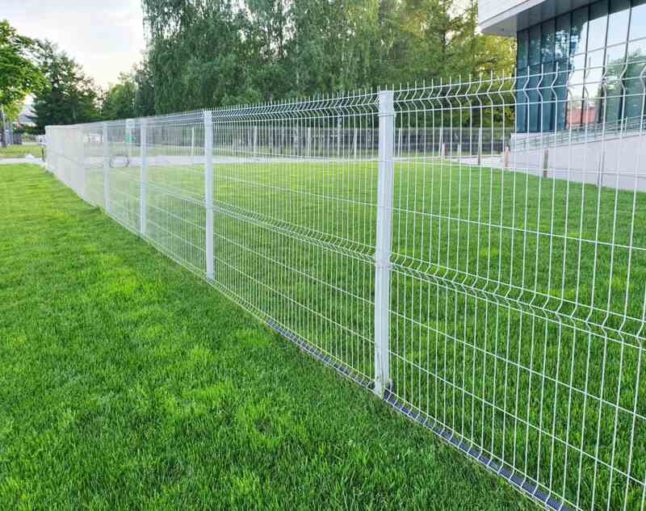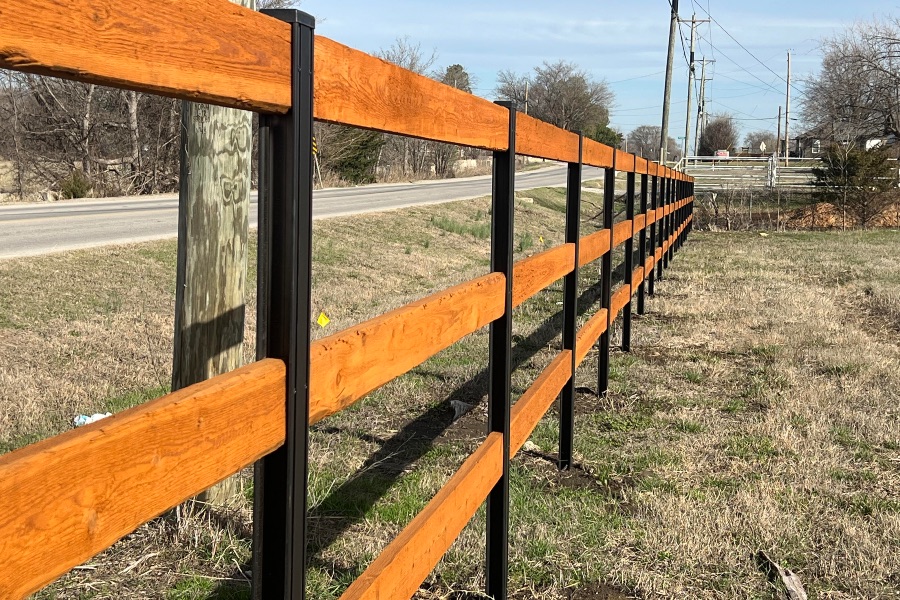All Categories
Featured
When safeguarding your building, choosing the best fence elevation is necessary for both personal privacy and safety. The height of your fencing plays a substantial role in identifying how efficient it will go to securing your home or business from trespassers. While a high fence might look like the ideal option, the excellent height relies on numerous aspects, consisting of protection needs, neighborhood laws, and the products made use of. Below, we'll lay out vital considerations to assist you select the best fencing elevation for optimum safety and security.
![]()
If you reside in a neighborhood controlled by a property owners' organization (HOA), you should also review any type of details guidelines they have for fencing height, design, and materials. Adhering to these guidelines ensures you prevent lawful issues and maintain a great relationship with your neighbors.
Taller fences are harder to range and can significantly lower the possibility of break-ins. Adding attributes like sharp tops, barbed cord, or even electric fencing can better enhance the obstacle's security. A fencing that gets to 8 feet or greater is often effective at preventing most individuals from easily jumping over it.
![]()
Wood Fencings: While wood fencings supply personal privacy, they can be easy to climb up, especially if there are no anti-climb attributes. For optimal safety, consider a wood fencing that's 6 to 8 feet high with sharp tops or trellis extensions that make it more challenging to scale. Chain-Link Fences: Chain-link fencings are frequently extra budget friendly and resilient than timber, and they can be constructed to the necessary elevation for safety and security. To increase deterrence, take into consideration adding barbed or razor wire on top. These attributes dissuade climbing up and make the fencing a lot more tough to breach. Wrought Iron Fencings: Wrought iron fences are frequently utilized for high-security objectives as a result of their strength and sturdiness. Their vertical bars make it hard to climb, and they can be constructed to 6 to 8 feet high with extra spikes or attractive anti-climb functions to additional secure the boundary. Plastic Fences: Plastic is an outstanding selection if you need a solid, private fence, but like timber, plastic fences might require added elevation or protection features to prevent climbing up. Select a fencing that is at the very least 6 feet high to ensure privacy and safety and security. Each product supplies various benefits in regards to looks, sturdiness, and upkeep, so it is essential to consider your specific needs and preferences when choosing a fencing.
Anti-Climb Attributes: Mounting sharp or pointed tops, trellis expansions, or security spikes on top of the fencing makes it harder for anyone to scale the fence. These attributes work as a solid deterrent to possible burglars. Barbed or Razor Wire: Including barbed cord or razor wire at the top of your fence increases safety and security considerably. This is commonly made use of in high-security locations, such as commercial homes, but can also be a great choice for domestic properties in high-risk areas. Electric Fence: For top-level security, you might want to think about adding an electrical fence to your property. Electric fencing, when mounted effectively, can create a strong deterrent while continuing to be reasonably discreet. It provides a light shock to anybody that tries to touch or climb up the fencing. Incorporating height with these extra attributes makes certain that your fencing supplies the highest degree of protection.
Balancing the need for personal privacy and security while maintaining the aesthetic allure of your residential property can assist you pick the right height and material for your fencing. Ensure that your fencing enhances the total style of your home and doesn't adversely impact the curb appeal.
![]()
By thoroughly taking into consideration all these elements, you can develop a safe, personal, and eye-catching boundary around your home that supplies both satisfaction and protection.

- Understand Resident Laws and Zoning Regulations. The primary step in selecting your fencing height is to acquaint on your own with local regulations. Numerous districts have zoning regulations that determine the optimum allowed elevation for fencings, particularly in front backyards and along residential property lines. Usually, front yard fencings are limited to 3 to 4 feet, while backyard fences can be as high as 6 to 8 feet or even more. Some locations may require a permit for fences over a certain elevation, so it's essential to get in touch with your local zoning workplace before beginning building and construction.
If you reside in a neighborhood controlled by a property owners' organization (HOA), you should also review any type of details guidelines they have for fencing height, design, and materials. Adhering to these guidelines ensures you prevent lawful issues and maintain a great relationship with your neighbors.
- Figure Out the Preferred Level of Security. The level of safety you need is a major variable in figuring out the excellent fencing elevation. A fence between 4 to 6 feet may be adequate if you're looking to prevent informal intruders or maintain children and pet dogs inside the lawn. Nevertheless, for higher protection requirements-- such as protecting against robbers or guaranteeing security in high-crime areas-- you may need a taller fencing. A fencing height of 6 to 8 feet is usually advised for ideal safety and security.
Taller fences are harder to range and can significantly lower the possibility of break-ins. Adding attributes like sharp tops, barbed cord, or even electric fencing can better enhance the obstacle's security. A fencing that gets to 8 feet or greater is often effective at preventing most individuals from easily jumping over it.
- Pick the Right Product for Your Fence. The material of your fence plays an essential role in its ability to provide safety and security. While taller fences are better for safety and security, the sort of material you make use of can prevent the performance or improve of the elevation. Below are some preferred fencing products for safety and security:

Wood Fencings: While wood fencings supply personal privacy, they can be easy to climb up, especially if there are no anti-climb attributes. For optimal safety, consider a wood fencing that's 6 to 8 feet high with sharp tops or trellis extensions that make it more challenging to scale. Chain-Link Fences: Chain-link fencings are frequently extra budget friendly and resilient than timber, and they can be constructed to the necessary elevation for safety and security. To increase deterrence, take into consideration adding barbed or razor wire on top. These attributes dissuade climbing up and make the fencing a lot more tough to breach. Wrought Iron Fencings: Wrought iron fences are frequently utilized for high-security objectives as a result of their strength and sturdiness. Their vertical bars make it hard to climb, and they can be constructed to 6 to 8 feet high with extra spikes or attractive anti-climb functions to additional secure the boundary. Plastic Fences: Plastic is an outstanding selection if you need a solid, private fence, but like timber, plastic fences might require added elevation or protection features to prevent climbing up. Select a fencing that is at the very least 6 feet high to ensure privacy and safety and security. Each product supplies various benefits in regards to looks, sturdiness, and upkeep, so it is essential to consider your specific needs and preferences when choosing a fencing.
- Include Safety Features for Bonus Defense. While elevation is essential, including extra security attributes to your fencing can boost its performance. Consider the adhering to enhancements:
Anti-Climb Attributes: Mounting sharp or pointed tops, trellis expansions, or security spikes on top of the fencing makes it harder for anyone to scale the fence. These attributes work as a solid deterrent to possible burglars. Barbed or Razor Wire: Including barbed cord or razor wire at the top of your fence increases safety and security considerably. This is commonly made use of in high-security locations, such as commercial homes, but can also be a great choice for domestic properties in high-risk areas. Electric Fence: For top-level security, you might want to think about adding an electrical fence to your property. Electric fencing, when mounted effectively, can create a strong deterrent while continuing to be reasonably discreet. It provides a light shock to anybody that tries to touch or climb up the fencing. Incorporating height with these extra attributes makes certain that your fencing supplies the highest degree of protection.
- Consider Personal Privacy and Aesthetic Preferences. While security should be your primary concern, it's likewise important to take into consideration the aesthetic appeal of your fencing. Tall fencings might give security, however they can often show up enforcing or hostile. If personal privacy is an issue, a strong wood or vinyl fence can offer both safety and seclusion, while a wrought iron fence uses protection with an open view.
Balancing the need for personal privacy and security while maintaining the aesthetic allure of your residential property can assist you pick the right height and material for your fencing. Ensure that your fencing enhances the total style of your home and doesn't adversely impact the curb appeal.

- Last Thoughts on Fence Height and Safety And Security. Picking the appropriate fence elevation for optimum safety and security entails stabilizing numerous elements, including regional policies, the degree of safety and security required, the material of the fencing, and added security attributes. In basic, a fencing elevation of 6 to 8 feet is ideal for most residential homes, with taller fencings supplying an included layer of defense for high-risk areas.
By thoroughly taking into consideration all these elements, you can develop a safe, personal, and eye-catching boundary around your home that supplies both satisfaction and protection.
Latest Posts
Find the Greatest Auto Repair Offers in Montclare, Chicago
Published May 27, 25
1 min read
Uncover Cost-Effective Auto Repairs with Montclare’s Exclusive Service Specials
Published May 25, 25
1 min read
Understanding Roof Covering Guarantees: What Homeowners Need To Know
Published May 24, 25
1 min read
More
Latest Posts
Find the Greatest Auto Repair Offers in Montclare, Chicago
Published May 27, 25
1 min read
Uncover Cost-Effective Auto Repairs with Montclare’s Exclusive Service Specials
Published May 25, 25
1 min read
Understanding Roof Covering Guarantees: What Homeowners Need To Know
Published May 24, 25
1 min read